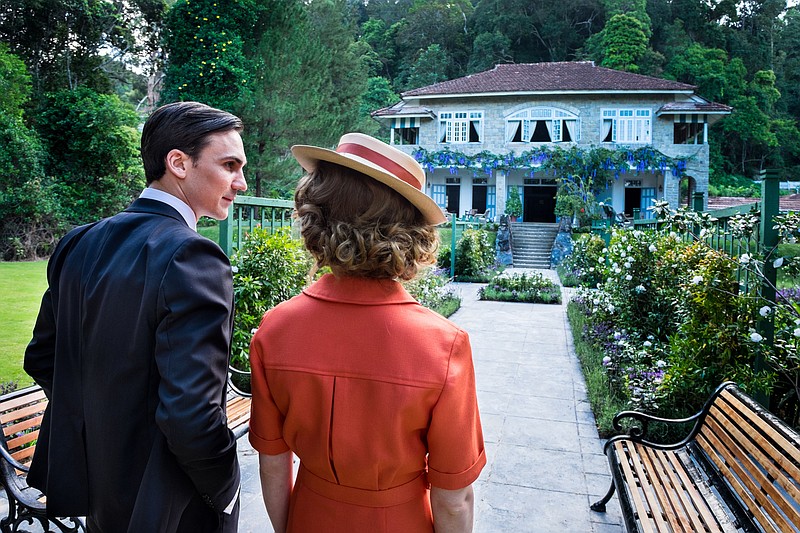LOS ANGELES (AP) - A man leans close to a brass plaque that's engraved "Royal Simla Club, no dogs or Indians." He spits on it.
Then the Indian servant begins briskly polishing the sign, part of the effort to make everything ready for the annual summer influx of British colonials seeking the cool of the Himalayan foothills.
The scene in episode one of "Indian Summers," airing at 9 p.m. EDT Sunday on PBS' "Masterpiece" showcase, is jarring and telling. The nine-part drama is an immersion in the extreme privilege and subjugation created under Britain's enduring empire.
But it's 1932, and the independence movement lead by Mahatma Gandhi and others is gaining inevitability. "Indian Summers," propelled by a mix of power and desire, builds up steam with the same steady confidence.
The drama was a success for the U.K.'s Channel 4 when it aired earlier this year, drawing some comparisons to "Downton Abbey" and its portrait of England's landed gentry facing 20th-century disruption.
"Masterpiece" executive producer Rebecca Eaton said she quickly replied "it's a deal" when the project was pitched to her as "'Downton Abbey' meets 'The Jewel in the Crown,'" the acclaimed 1984 series set at the empire's twilight in 1940s India.
But "Downton," returning to PBS in January for its final bow, is a veritable fairy tale compared with "Indian Summers," in which the ruling class behaves far less kindly toward those in their employ, or thrall, and both the climate and action are hotter.
There's government and personal corruption, dangerous romance and raw sexuality. And the fortunes of the haves and have-nots - the British and the Indians, the rich and the poor - are more closely intertwined and get equal attention in "Indian Summers."
It's a ground-level view of a chapter of English history that creator and writer Paul Rutman told reporters is viewed by some on the right in the U.K. with "quiet clandestine pride" and on the left as "something we should beat ourselves up about."
But the show's aim, he said, is to "make it a very human story with Indians, British, with stories of lies and loves ... (and) to try and write those contradictions and make it something that everyone can be drawn into."
The series, airing through Nov. 22, stars Henry Lloyd-Hughes as Ralph Whelan, an ambitious private secretary to the British viceroy; Nikesh Patel as Aafrin Dalal, a handsome clerk in the elite Indian Civil Service; and Jemima West as Ralph's beautiful sister, Alice, who's ditched her husband in England and is back in the country where she and her brother grew up.
(Spoiler alert: "handsome" and "beautiful" are code for a potential hookup.)
The cast also includes Rita Walters in a lip-smacking performance as the scheming owner of the Simla Club and Roshan Seth and Lillete Dubey as Aafrin's parents.
From the start, Rutman's vision for "Indian Summers" included a wide-lens view of Indian and British lives.
"My ambition was to try and tell the story, as far as I can, from both perspectives, and so the series is constructed around two families," the Whelans and the Dalals, he said, with each perspective as important as the other.
Series star Patel said his initial reading of the script took him by surprise.
"It was the first time that I'd read a story set at this time about British India (and) there was as much about the Indians as there was the Brits, and where the Indian characters didn't feel like they were on the periphery, looking in," he said.
All the characters except Lord Willingdon, the viceroy played by Patrick Malahide, are fictional, executive producer Charlie Pattinson said from London, with Rutman intent on having "complete freedom" to create personal lives that could effectively intersect with real events.
But the project was heavily researched and relied on historians in India for fact-checking, Rutman and Pattinson said. Shot on location in Malaysia, which they called a more convenient, less developed stand-in for India, the drama makes the most of its lush setting without turning into a travelogue.
Rutman has a five-year, 50-episode plan for the drama that will bring it to a conclusion in 1947, which he called the effective end of the British Raj, or rule, in India.
His optimism for the show's continuation may be justified: Production on season two is under way and PBS already has picked it up to air.
___
Lynn Elber is a national television columnist for The Associated Press. She can be reached at lelber@ap.org and on Twitter at http://twitter.com/lynnelber .
___
Online:
http://www.pbs.org/
